We asked our contributors, “Who is your favorite military officer that never saw any combat?” The intent was to showcase officers who saw no combat during their lives, but some respondents took it to mean only during the American Revolution.
William M. Welsch
I offer John Dickinson of Delaware and Pennsylvania. Known primarily as a politician and strong patriot, Dickinson authored the Farmer’s Letters, the Olive Branch Petition, and other pieces. But he voted against the Declaration of Independence, essentially saying it was too soon and we were not ready. Yet, early in the war, he served in both the Philadelphia and Delaware militia as a private, colonel, and general, although seeing no combat. His contributions throughout the founding period were numerous. To quote William Daniels as John Adams in 1776, “I say yea John Dickinson.”
Nancy K. Loane
Timothy Pickering, who admittedly did serve a short time in the Massachusetts militia, was a brilliant, opinionated, and hard-working Harvard graduate. He served as Washington’s adjutant general, on the Board of War, and as quartermaster general. Pickering later became postmaster general of the new nation, then secretary of war and secretary of state. Pickering revered his wife, writing Rebecca that wedlock was a “perpetual fountain of domestic joy. Your love, my fair one, transforms brass to gold.” Pickering adored his children, and, although often away from home, planned detailed courses of study for them to follow. Indeed, it was said that Pickering resembled Cato, the noble Roman, in that “family life always formed with him the central object of existence.” And that’s why I especially like the man.

Philip D. Weaver
The answer has to be Maj. Gen. Philip Schuyler. I do not know if it was just coincidence, or intentionally planned, but he seemed to find a way to avoid all military conflict in the northern theater from 1775 to 1777. He was always getting sick in some way and being sent home. He seemed to run his department from his own front porch in Saratoga. Ironically, when he was staying at his mansion in Albany, it was attacked on August 7, 1781. In the attack he acquitted himself very well. Though, for the purpose of this discussion, it was not combat and he was out of the Continental army at the time. On the flip side, the man was an administrative and logistical genius. Not only does he appear more intelligent than many of his fellow officers, he could organize, move, or stop supplies and personnel better than anyone. His ability to play the political game was beyond compare. Somehow he was able to hang onto an ever shrinking department longer than by any right he should have. He even maintained a joint command of the Northern army, with Maj. Gen. Horatio Gates, after the Canadian Department folded in early 1776. Why he was made a field general, I have no idea, although he clearly had political connections and prior military experience (though it was not in field work). They must have wanted to honor him in some fashion, but I think he would have really served the army better being assigned to the quartermaster and/or commissary departments.
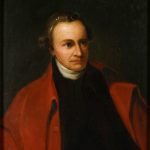
William Reynolds
My candidate would be Patrick Henry. In the spring of 1775 he was captain of the Independent Company of Hanover County (Virginia) and performed notable service by challenging the theft by Virginia’s royal governor of the colony’s gunpowder that May. He was elected colonel of the 1st Virginia Regiment that summer. As one writer put it, his political ability exceeded his military talent and he resigned early in 1776, never having been in battle. However, his other talents are well-known.
James Kirby Martin
There are some interesting candidates out there. I was thinking about John Hancock, but he saw limited combat as a militia general in a failed 1778 Rhode Island campaign. Then there’s John Trumbull, who served briefly as an aide to both Washington and Gates before transforming himself into one of the most famous artists of the Revolutionary era. I don’t believe Trumbull was in combat, but he caused me to think of Horatio Gates, although not a personal favorite. Admittedly, Gates was wounded during Braddock’s Defeat in 1755. Even though caught up in combat then, during the Revolutionary War Gates consistently did not experience direct combat. The British did not attack Fort Ticonderoga in 1776 when he was in command there. In 1777 he stayed away from the actual combat sites of the Saratoga battles but still emerged as Congress’s “hero” because he was then serving as the overall Northern Department commander. As for his leadership performance at Camden in 1780, Gates may have sniffed some gunpowder, but he quickly abandoned his army and rode away from this combat arena as fast as he could. So my vote is cast for this ambitious general officer who did not experience actual combat during the War for American Independence. That Gates helped care for downtrodden, poverty stricken soldiers after the war was, on the other hand, a praiseworthy accomplishment.
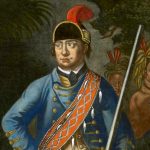
Jim Piecuch
Maybe it’s because of my New Hampshire roots, but I have to give a lot of credit to Robert Rogers. As the founder of the famed Rogers’ Rangers, he saw extensive action in the colonial wars, but not in the Revolution. He did, however, begin raising the Queen’s Rangers for the British, and they developed into a highly effective unit under John Graves Simcoe. His concept of using rangers in frontier warfare also provided a model for Butler’s Rangers and other British units, so he had a significant impact on the War for Independence without seeing combat.
Christian M. McBurney
I think Jeremiah Wadsworth of Connecticut, commissary general, deserves the nod, in light of his difficult work trying to feed the Continental Army during trying times. But I will select John Laurance of New York, who served as Judge Advocate General of the Continental Army from April 1777 to June 1782. He became the third-longest serving of Washington’s thirty-two wartime staff members. At Valley Forge, he helped maintain the discipline in the army by bringing more than 150 courts-martials, including some against officers for failing to spend time drilling their troops using Steuben’s new system. He was the prosecutor at the courts-martials of a host of major generals, including at the trials of Charles Lee and Benedict Arnold. He also sent John André to the hangman.
Daniel J. Tortora
Captain Nathan Hale. He was a young teacher who never held political office and never saw combat. He had helped maintain fortifications and was part of the first intelligence gathering unit of the United States. Captain Hale voluntarily accepted a dangerous and difficult mission to go behind enemy lines and it ultimately cost him his life. While the precise words of his “sensible and spirited” speech remain open to debate, his love for country, courage, dignity, and selfless service is without question. It’s also noteworthy that his nephew was the two-hour-long opening act to Abraham Lincoln’s two-minute-long Gettysburg Address.
Gregory J. W. Urwin
Philip Schuyler, one of the Continental Army’s first four major generals and the first commander of the Northern Department. Health problems consigned him to an administrative role—until Horatio Gates engineered his removal in the summer of 1777—but he saw action as a Provincial officer during the Seven Years’ War at Lake George (1755), Oswego River (1756), Ticonderoga or Carillon (1758), and Fort Frontenac (1758).
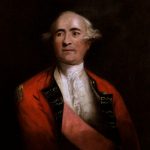
Gene Procknow
Frederick Haldimand is my nomination for the most admirable non-combatant military officer during the American Revolution. Haldimand served as the military commander of New York before 1775, the British commander-in-chief during an absence by Gen. Thomas Gage, and finally, the Governor of Canada. He did this job exceedingly well despite being passed over from key commands (including overall North American commander-in-chief) due to his Swiss birth. More discerning of the rebellion’s popular support than any other British officer, Haldimand best managed the political, cultural as well as the military aspects of attempting to return to Crown control. An example is his distrust of the “profligate banditti” when ordered to negotiate with the Vermonters to re-enter the British empire by his superiors. Further, his defense of Canada with only a few thousand soldiers exemplifies a textbook strategy. Haldimand ordered raids by his small forces into the Mohawk Valley to destroy local food sources, thereby making an invasion impractical. There is a tendency to dismiss the capabilities of the leaders on the losing side. The outcomes of the American Revolution would have been more favorable to the British if the bias against foreigners did not prevent Haldimand from succeeding Gage as the British commander in 1775.
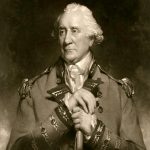
Roger Smith
This will be outside the box a bit, but I have to go with Lt. Col. (major general by war’s end) Patrick Tonyn, royal governor of East Florida. Tonyn was the only governor south of the Canadian border who kept his colony loyal for the duration of the war while keeping his hand in the conflict with his formation of the East Florida Rangers. Under Tonyn’s leadership, East Florida repelled three invasions and British regulars and militia from the colony participated in the conquest of Georgia and an attempted attack on Charleston. He also oversaw the financial salvation of the colony immediately upon his arrival March 1, 1774.
Jason Yonce
Thomas Fitzsimmons fits this description nicely. He was a captain in Benjamin Franklin’s own “Associators” in Pennsylvania, served on the Navy Board, and later on he was a delegate to the Constitutional Convention. Despite some close calls his company never saw direct combat. Fitzsimmons was a very wealthy merchant in league with Robert Morris and one of those rare Framers who was just by all accounts a kind human being like Caleb Strong or George Wythe. Surviving writings from his soldiers, and other Framers, and his later philanthropy toward Irish immigrants attest to this. Like Morris, Fitzsimmons used his wealth and influence to quickly mobilize a volunteer force as well.
Eric Sterner
I always admired Maj. Gen. Philip Schuyler, commander of the Northern Department, as one of the most interesting Continental generals not to see combat during the war. Although he fought in the French and Indian War, ill health kept him out of the Canadian and Saratoga campaigns. Instead, he had to pass combat command to others and focus his efforts on organization, logistics, planning, and recruiting, the key ingredients of building an army. Without him, Montgomery, Gates, and Arnold would have been hard pressed to accomplish anything in New York.
Michael J. F. Sheehan
I’d have to say Col. Ann Hawkes Hay of the 2nd (Haverstraw) Regiment of Orange County Militia in New York. He wrote letters to Washington to Gov. George Clinton, rallied men to turn out (not always with success, but always with frustration), and kept an eye on the Hudson River. When the British officially invaded his precinct, from May 31 to October 21, 1779, in their possession of Stony Point, his men (Acker’s and Kiers’ Companies) exchanged a few rounds, but there was never a set engagement; the Continental Army took care of that, so it seems Hay never got himself personally into a firefight, although elements of his regiment did at times.
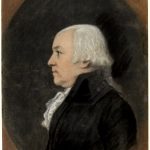
Joseph E. Wroblewski
My choice for the best military officer that never saw combat is Col. Elias Boudinot IV, the first Commissary General of Prisoners. When he became the Commissary of Prisoners he faced a number of daunting tasks: 1) seeing that British and Hessian prisoners of war were securely housed and their physical needs taken care of until prisoner exchanges could be arranged; 2) supplementing the rations and basic amenities of Americans held by the British; 3) procuring intelligence, in accordance with Washington’s “job description” for the position, making him the head of a spy network. Boudinot held the position from April 1777 thru July 1778, during which time he performed his duties admirably. For details on his service see, JAR April 23, 2018: Elias Boudinot IV: First Commissary General of Prisoners.
If you would like to participate in our monthly contributor questions, JAR is always looking for exceptional writers to be eligible!








6 Comments
Gen. William Floyd, signer of the Declaration of Independence, Mastic, NY.
Lest we forget – what about the various supporting roles of the medical establishment including the surgeons, and the entire group of camp followers including the teamsters, cooks, carpenters, blacksmiths, horse wranglers, laundresses, etc. An army does not move on fighting generals alone! Without the people, there would have been no republic.
What were the health problems Philip Schuyler endured? I read that he was in some kind of pain daily. I believe his removal from command of the Northern Department was unwarranted. Though Schuyler never fought in the field his effort in another capacity stifled Gen. Burgoyne.
The inclusion of Robert Rogers is incorrect. He saw action during the New York campaign attached to Howe’s army. He is noted to have taken part in at least one engagement during that campaign at Mamaroneck when part of his force was overrun during a confused nighttime fight. Rogers’ stood amidst his men in the confusion shouting “Steady, boys, steady! Fire! Fire!”, his shouting was heard by the approaching Continentals
In the British army one notable example may be John Andre who probably not see any combat despite being close to action on several occasions. There were also British army officers who served in administrative and command functions in Great Britain who did not go overseas such as Amherst and Monckton.
John Andre saw more than 40 days of combat in 1775, during the siege of Fort St Johns.